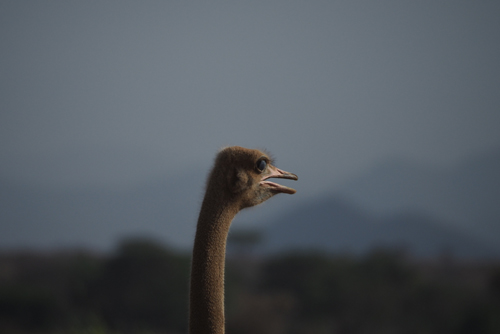
Day 1, September 21: Nairobi, Kenya.
Hakuna matata means “no worries” in Swahili.
This saying, popularised by the 1994 Disney movie The Lion King, is so profound it’s frightening. As we found out on our 15 day tour of Kenya and Tanzania.
Our flight from Madrid to Adis Ababa, via Malta, was uneventful.
Except we didn’t stop in Malta.
We were expecting the worst, especially with our luggage, as the flight change was only meant to be 30 minutes.
We never did stop in Malta and the turnaround in Adis turned out to be two hours.
On arrival in Nairobi our driver, from Kenya Walking Survivors Safari Tours (KWSS), yes that’s the company name, was well over an hour late.
After two phone calls our driver arrived, he blamed the traffic. I had the feeling that our problems were far deeper than that.
We were driven to the office of KWSS, where we met Mr. Otieno Lysaniash, the owner.
He suggested that we change our itinerary and spend more time in Kenya and less in Tanzania. This was to make the most of the Wildebeest and Zebra migration which was happening while we were there.
Everything seems to move at a very different pace in Kenya.
It took us one and a half hours for Thea to get a toasted sandwich for lunch.
It’s a bit like Vanuatu and Fiji time – back in the 70s.
Another interesting aspect to Kenyan dining is that you never get a bill with a total.
You have to do the calculations and it’s only when you get your change do you find out if you were correct.
The population of Kenya is over 45 million and the official language is English. The common tongue is Swahili and there are 42 different tribes, each with their own language.
Kenya is named after Mount Kenya and is a combination word from the Kikuyu, Embu, Kamba and Kiinyaa languages, meaning ‘God’s resting place’.
Our driver and guide was David Mwendwa Kasau. He described the tribes in Kenya as being like football sides. They are fundamentally the same but fervently support their own origins and traditions.
In general the Kenyan population is very poor, with a third of people incomes going towards paying bribes, which averages 16 per month.
The largest contributor to Kenya’s GDP is tourism, so it’s not surprising that there are a lot of dodgy practices in this sector.
We were to discover this first hand.
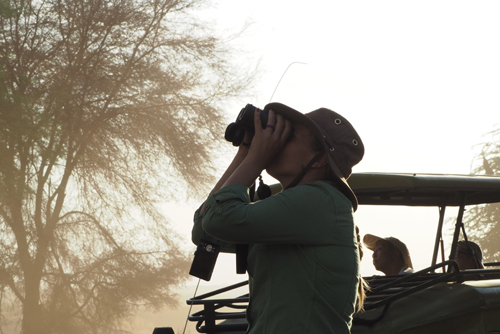
Day 2, September 22: Nairobi to Samburu National Reserve.
On our first full day we took Thika Road out of Nairobi where the traffic was light, however going in to the city was a car park.
As well as languages there seemed to be a mixture of religions, as we passed Buddhist temples as well as many Christian churches and church schools. There were also Mosques in certain areas.
Saccos are everywhere.
These are privately run mini busses, about the size of a small VW van. They have a driver and a ‘conductor’. The conductor’s job is to open and shut the sliding door, collect fares and direct the traffic so his Sacco gets into the best position.
The area north of Nairobi is the ‘fruit bowl’ of Kenya. On the roadside everything is sold, especially fruit and veg.
The fruit and juice beverage company, DelMonte, has a very big presence in Kenya and their pineapple plantations lined the roadside.
Greenhouses growing flowers for the European market, were also everywhere. Kenyan flowers make up 35% of the flower sales in the EU.
We moved from the very fertile red earth of the rain shadow area between the mountains to the black soil of the more arid valley. As we were told, Kenya is blessed with good soil but not enough water.
Furniture production replaced agriculture, with tables, chairs, sideboards and timber ornaments now dominating the roadside stalls.
Acacia trees started to appear, a true sign that we were in Africa.
We hadn’t seen a Caucasian since leaving the hotel in Nairobi – that’s until we made our first stop.
It was a souvenir shop and toilet break. This ‘opportunity to buy’ was full of whites.
I was sure that there would be lots more buying opportunities to come.
These souvenir places are called curio shops and in order to get the tourists in they provide clean washrooms (we call them toilets) and many either have food or at least a place to eat your packed lunch.
Even though we were happy to pay KSh10, (AUD13 cents) to use the toilets in other more convenient places, David insisted that we went to the curio shops.
I am sure that there was a reward involved somewhere.
We then passed over the equator. Here you could pay to see water turn clockwise on one side of the equator and in a anticlockwise direction on the other.
This is a complete con as this phenomenon doesn’t occur that close to the equator.
After a very long day on the road we arrived at Samburu Game Lodge.
No sooner had we got into the reserve, than we started to see animals.
Squirrels at first, then baboons and then they got larger – gazelle, giraffes and lions.
Plus there were birds everywhere we looked.
Our vehicle was equipped with a two way radio, which David put to good use. As soon as an animal was spotted, by the driver of any safari vehicle, he would radio the location. Before no time at all, other vehicles would arrive on the scene.
We were the first to spot a couple of lions and their cubs.
Once we retuned to the lodge and checked in there were even more animals. Monkeys, Baboons and a pair of Grand Gazelles.
After dinner we were heading back to our room, when we were stopped by one of the lodge staff.
He told us to wait as there were two elephants grazing in front of our lodge.
After they were chased back across the river we were escorted by two staff members and the chef, back to the safety of our room.
We locked the door, as instructed, because the Baboons often barge in unexpectedly.
What an eventful day.
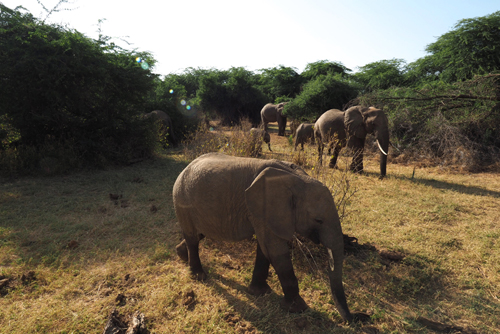
Day 3, September 23: Samburu National Reserve.
We were now into the serious business of touring with a guide. When you travel on your own you set your own schedule.
This doesn’t happen when you are under someone elses control.
They have a plan and you basically need to follow it. After all they know the local environment, where the best photo opportunities are and how long it takes to get from place to place.
We were away for three months, so 15 days of regimentation wouldn’t hurt.
We were up early for breakfast then on the road in the Samburu National Reserve.
There were two game drives planned. One in the early morning and another in the late afternoon.
These are the best times to see the animals, as it’s not too hot and they are active. It’s also the time they head to the river so they are concentrated into a smaller area.
Our lodge in Samburu National Reserve was very comfortable and the food was excellent. Original recipes, that used fresh and tasty ingredients. The presentation was just as good.
For most of our time in Kenya we got full board at the hotels, guest houses and game lodges. This means that there is more food, than one person could possibly eat, at every meal.
Our guide, David and the staff at the Samburu Lodge were shocked that we didn’t have all three courses for breakfast, lunch and dinner.
The roads in most game parks are dirt and as this was the end of the dry they were also very dusty. In Sumburu it’s called Talcum Powder, not dust.
Once in Africa I found I was using my telephoto lens far more than I had done in Spain. In Europe the wide angle was the lens of choice as it better captures the architecture and scenery.
In Africa it’s all about the animals.
The Big Five are what most tourists come to see in Africa. They are the Elephant, Rhino, Lion, Leopard and Buffalo.
There is far more than that, as the place is alive with life, on the ground and in the air.
The animals are only part of what is there. The birds, reptiles and flora are also unique. We were constantly asking David to stop in order to get a snap of something small and seemingly insignificant.
He soon realised that we were in Kenya to see much more than just five animals.

Day 4, September 24: Samburu National Reserveto Lake Nakuru National Park.
After a short game ride following breakfast, where we again found elephants, giraffe and lions, we got onto the A2 Trans-East African Highway.
Our driver wanted to see how our Tom Tom worked, so we plugged it in and set the destination to Nakuru, where we were to spend the night.
It was interesting to see David’s face as the GPS gave directions, our speed, turns right and left and then it spoke to him, with a very English accent.
It was very entertaining.
What we did discover after a few days with the Tom Tom on, was that it’s no replacement for local knowledge.
It directed us up roads that David said were impassable.
We headed towards Lake Nakuru National Park. Much of the way we were retracing the route we took coming from Nairobi.
We then turned off on the C75 at Kiganjo.
Just past the turnoff we went through a coffee growing region.
Red onions were also a popular crop and the locals lined the side of the road selling bags of them. Then tea plantations took over.
It was a roller coaster ride as the road climbed then descended through the mountains.
We stopped for a quick boxed lunch at the equator and then continued on to Thompson Falls and Nakuru, in the Great Rift Valley.
We were told that there are many ‘Equators’ in Kenya. Each one is trying to separate the tourists from their money.
We must have been in ‘God’s Country’ as there were so many churches.
Names such as The Redeemed Gospel Church, Deliverance Church and the Higher Life Christ Church were all advertised with hand painted signs.
Many of the Saccos also have a connection with the almighty and they proudly display their faith on the sides of their vans.
Addicted to Jesus, Fruit of Faith and Miracle Child were some.
The best one I found was: I hope you are following Jesus Christ as closely as you are following me.
Our last stop for the day was at Thomson’s Falls.
It was named, in 1883, after the Scottish explorer and geologist, Joseph Thomson’s.
It is rather a spectacular cascade of 74 metres, spoilt by the residential apartments right next door.
As our guide, David, pointed out Thomson would not have been the first human to have viewed these falls, surely that would have been a Kenyan.
Our hotel in Nakuru wasn’t a patch on the lodge we stayed in at Samburu National Reserve. Fortunately it was only for one night.
The dinner was a buffet. There was a reasonable choice of meat, fish, salad and vegetables. The problem was that the ‘buff’ was set up and there were only four people there to eat it.
We were outnumbered by the staff two to one.
Á la carte would have been a simpler and more economic option.
Then the staff came into the restaurant to have their meal. I think the buffet was mainly for them.
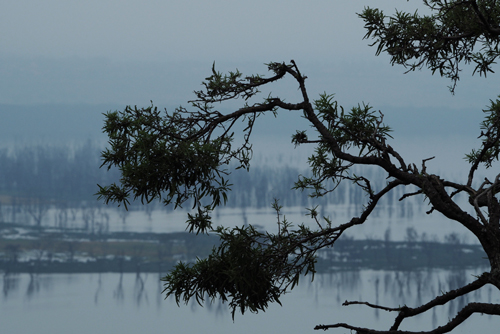
Day 5, September 25: Lake Nakuru National Parkand Maasai Mara National Reserve.
Our schedule had be altered to spend more time in Maasai Mara, rather than the Serengeti.
They are both part of the great migration route and in the same geographical area. The only difference is Maasai Mara is in Kenya and the Serengeti is in Tanzania.
This required a change of plans and there was some confusion between the tour operator, our guide and us.
After the discussion over breakfast we went to Lake Nakuru National Park and spent a couple of hours on a game drive.
All the changes were in Mr. Otieno Lysaniash’s head and everything seemed to be very fluid and the detail was scarce.
Hakuna matata.
Overnight it rained and the temperature dropped. There was a feeling in the air that more rain might follow.
The Lake Nakuru National Park is much lusher than Samburu and there are different animals there.
The one we came to see was the White Rhino, we also saw Buffalo, Common Zebras and Rothchild’s Giraffes. These are a different species of zebra and giraffe to the ones in Samburu.
Place names and business names are a strange dichotomy in Kenya. On one hand cities, towns and geographic locations seem to all have Kenyan names. To our English speaking ears most are unpronounceable.
However, business names seem to have a very Anglo Saxon flavour.
George’s Resort and Coffee Shop, was where we had a lunch stop. Surprisingly they had an espresso machine and made us a good short black.
Other names we encountered were, Club Berry Lounge, Father’s Choice Butchery, Ribbons Café, Great Stars Academy, Spring Valley Machinery and one I particularly liked, Threads of Hope Sewing Centre.
We then had to try and get our tongues around local names such as, Nyambururu, Kamirithu and
Empopongi.
It was a long 277 kilometre journey from Lake Nakuru to Maasai Mara and again I sat up the front to keep David company.
I noticed that a lot of vehicles have their registration number engraved on their windows and even the plastic weather shield.
Apparently this is a deterrent to cars being stolen and then wrecked for the parts.
On the country roads and even some of the urban ones, cattle, sheep, donkeys and goats wander across without care.
Even wildlife like baboons and zebras have free reign in the more remote areas.
About 65 kilometres from Maasai Mara the road changed from being sealed to a corrugated, bone rattling ribbon of red earth.
Driving on the left seemed only to be an option, as the drivers chose the path of least resistance.
This could be on the left or right.
The verge seemed to be the smoother ride but it was sometimes on an acute angle. I found myself wondering at what degree of tilt would our van topple over.
Apart from the road changing, so did the weather – at least the rain settled the dust.
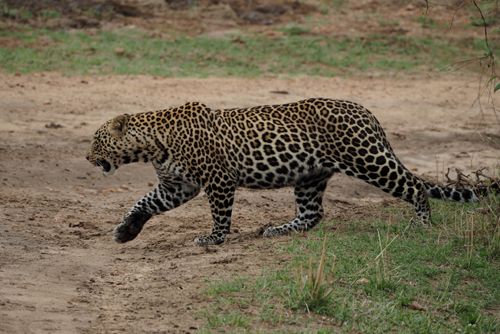
Day 6, September 26: Maasai Mara National Reserve.
We were told that our solar shower would take two or twenty minutes for the hot water to come through.
We weren’t quite sure which time was right
After twenty minutes it still hadn’t got much beyond lukewarm.
Our 15 day safari in Kenya and Tanzania had been paid for in advance and everything was included. Hotels, meals, our driver/guide, his van and petrol.
David seemed to have to go cap-in-hand, on a daily basis, to ‘Mr. O’, as he became known, to get money for petrol, water and our lunch.
This came via the M-Pesa through his mobile phone.
The M-Pesa is a bit like a bank, where you go to withdraw money that’s been put into your account. Your phone is your pass book.
It was a long day in the office. We spent nine hours snaking our way around the rough roads of Maasai Mara National Reserve. Our only break was to have our boxed lunch under a tree.
Here we we joined by a variety of birds as well as flying ants, who seemed very anxious to share our lunch.
We saw many animals, some we hadn’t seen before, like hippos, crocodiles, wildebeest and a hyena. The highlight was getting a close up look at a Leopard.
The Wildebeest and Zebra migration was passing through Massai Mara, so there were many thousands of them in the reserve.
Massai Mara National Reserve was established in 1961 and is 1,510 square kilometres in size. It is in the north of the Mara-Serengeti ecosystem which covers 25,000 square kilometres of Kenya and Tanzania.
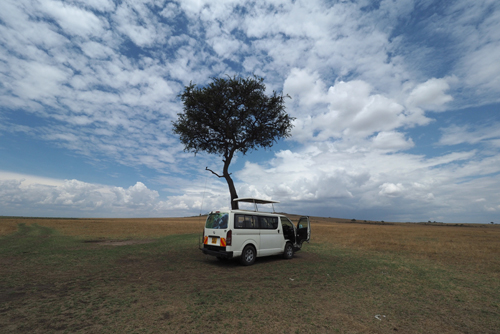
Day 7, September 27: Maasai Mara National Reserve.
We started a bit later on our second day in Maasai Mara as our guide had to again get money from Mr. O, through the M-Pesa.
It seems that our guide was only being drip fed his spending money.
This meant he had to buy a new ticket to the reserve each day we visited, rather than getting a three day pass. This meant running the gauntlet of Maasai ladies who stood guard at the gate selling souvenirs.
They were very persistent.
The circle of life was evident everywhere, as carcasses littered the roadside. We even spotted a leopard’s kill up a tree. She had dragged a small wildebeest high into the foliage to escape a pair of lions.
One of the most interesting sights that day was a Secretary Bird landing. These huge long legged raptors are like A380s and have to run when they come into land – this can take metres.
Again we had lunch under a tree. The spot was right on the border between Kenya and Tanzania.
Fortunately we didn’t have to share it with any critters.
We had crossed over the Mara River and were in the Mara Triangle. This is between the Tanzania border, the Mara River and the Oloololo Escarpment.
David left us to walk along the Mara River with crocodiles and hippos. Fortunately we were accompanied by by an armed game warden. Although I wasn’t that sure how effective his aged .22 rifle would have been against the predators.
No GPS was required In Maasai Mara, as David, with the aid of his mates and a unique sense of direction, seems to be able to find animals in the remotest of places.
The word goes out, over the short wave radio, and in no time at all we have crossed creeks, climbed hills and wended our way through a labyrinth of small tracks to find our prey.
Then the tourist vans gather like Vultures at the site.
At one point we were following a lioness stalking a zebra. No sooner had the call gone out we were surrounded by 10 tourist vans anxious to get a closer look.
The mornings were clear but by the afternoon the thunderstorms were back. This was a sure sign that the rains were on their way.
My iPhone app, ‘Health’, is doing strange things. On September 27 it told me that I had walked 10.01 kilometres. This is hard to believe considering I only got out of the van once to do the river walk.
This was only about 500 meters.
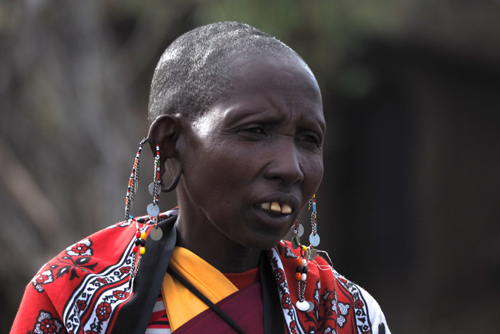
Day 8, September 28: Maasai Mara National Reserve.
The Maasai village visit was first stop on the agenda on our third and final day in Massai Mara.
This was an hour spent being escorted around the village by one of the chief’s sons. The chief was at the entrance to greet us, but more importantly collect the money for our visit.
We were told this would go to buy food for the village as their only income comes from animal husbandry.
They don’t grow crops or vegetables and graze their herd in both Kenya and Tanzania.
Passports or visas aren’t needed for the herdsmen as they can move freely across the border.
The chief’s son was a teacher and seemed very progressive in his attitude to the world, conservation and education. He told us that he had personally pushed for girls to get an education as well as boys.
This normally doesn’t happen.
In the Maasai tradition the role of chief is handed down to the oldest son. Our guide hoped that his work in education would put him in a good position to leapfrog his older brother.
We were given a demonstration of jumping by the men and then the women sang two songs for us. After that we were shown around a typical mud and straw house.
It was a tiny space divided into three small areas. A cooking space and two bedrooms. One for the parents and the other for the three children.
Then came our opportunity to buy. An entire area of the village was set aside as a shop for souvenirs.
We did buy a couple of necklaces but that was the extent of it.
Then the tour was over.
It was very staged but interesting and we were allowed to take as many snaps as we liked.
This made it very worthwhile.
This was our day of grizzly experiences. We came across a lioness with a domestic cow that she had just gorged herself on and was resting. Apparently the Maasai graze their cattle in the reserve, even at night.
They become easy prey for the predators.
A cow is worth a lot of money and this would have been a big loss to the owner.
Not long after that we witnessed a cheetah stalk and then run down a Grant Gazelle. She was accompanied by three juveniles. They kept a respectful distance from their mother, that’s until it was time to feed, then she stood back and let them get stuck in.
We then came across the leopard, from the previous day, who had hung her kill in a tree.
Now she was enjoying her catch.
It was much busier in the reserve on our third day than for the previous two. It took time to find a ‘Lunch Tree’, as most of them were occupied.
Within the reserve there was a constant threat of getting bogged. There were many small creeks to cross and I was very surprised just where the HiAce could go.
Everything is a trial in Maasai Mara, even getting fuel. We dropped into Sarova Mara Lodge to fill up but it was just past 4pm and the generator had been shut down. We then had to go into the Maasai village near our lodge and buy ‘Bush Fuel’, which they pump by hand. The problem with this is that you have no guarantee of the quality.
Only time and kilometres will tell how pure it is.
While we were filling up and having the oil checked the bonnet cable broke. This required repairs by the local mechanic.
This took time.
We have spent three, long, nine hour days in Maasai Mara and each one has been full of different experiences.
Time spent waiting for repairs was yet another.
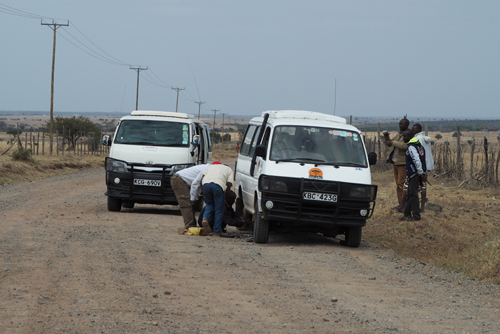
Day 9, September 29: Maasai Mara National Reserveto Lake Naivasha.
Living in tented camps can be a trial.
Hot water is solar and very unpredictable. On the first morning the water was cold, while on the second it was perfect, on the third and fourth it ran out.
You also spend your nights engulfed in a net cocoon, to protect you from malaria carrying mosquitoes.
Some mozzie nets are better than other and each one was different.
The ride back to the sealed C12, from the reserve, was yet another body shaking experience.
Over four days we had what’s described as a ‘Maasai Massage’. The roads are so corrugated and the surface so uneven that you need to get back your land legs whenever you stop.
This also had a detrimental effect on the vehicles that use these roads, especially the tourist vans.
On average they last about three years before they need replacing. They also need constant maintenance and repairs during that time.
Each morning our vehicle would arrive to pick us up looking like new, having been washed the previous night.
It’s what was happening beneath the surface that was concerning.
On the road to Naivasha we stopped to go to an ATM. I wasn’t fast enough retrieving my card and the machine swallowed it up, without an explanation and without having coughed up any cash.
It was panic stations.
Normally if this happens you have to wait for the bank to return you card by post.
Fortunately the bank manager understood our dilemma and opened the ATM and I got my card back.
Our driver banks with KCB, the same bank that swallowed my card. This also helped us, as he could go guarantor, just in case we were up to no good.
We tried again, under the watchful eye of the assistant manager and this time it worked.
He thought the whole incident was hilarious and told me to be faster next time.
Travelling has its adventures.

Day 10, September 30: Green Crater and Lake Naivasha.
At Lake Naivasha we were ‘upgraded’ to the Fish Eagle Inn from Carnelley’s Camp, which was right next door. I think this was a bit of spin by Mr. O to put us into a hotel that he had an account with.
It was a hotel rather than a lodge and had 24 hour power and reasonable WiFi all set in a beautiful garden.
However it was old and had seen better days.
And to Thea’s annoyance they couldn’t even provide a hair dryer.
We met a New Zealand couple in the AA Lodge in Maasai Mara, they were also traveling with Kenya Walking Survivors Safaris and we’re having similar financial issues with KWSS. By now we all realised that Mr O was in a bit of financial strife.
Like us, this Kiwi couple had paid their money up front to Mr. O. Unfortunately for them they had also asked him to arrange their flights from Kenya to Zanzibar.
He hadn’t done so early enough and there were no flights available when he went to book. This meant they had to drive hundreds of kilometres to another departure point.
Mr. O was taking the money and spending it on other things – he was, in fact, robbing Peter to pay Paul.
The word “Survivor’s” in the company name was now making sense.
Staying in this KWSS friendly hotel meant that David didn’t need to go to M-Pesa to withdraw money to pay our room bill.
There are seven lakes in the Rift Valley in Kenya, only Lake Naivasha is fresh water. Our hotel was right on the shores of the lake.
The main trip for the day was to the Crater Lake Game Sanctuary. This, as its name suggests, is a lake in a volcanic crater.
Anthracite, which looks like broken glass, littered the pathway around the lake.
I souvenired a small piece.
Crater Lake is unusual, in that it’s brown and salty. It has no exit for the water and is only fed by rain and a subterranean spring.
It changes from brown to green according to the seasons and the level of algae.
Anna was our guide and she was to take us for a walk around the rim.
Unfortunately Thea was having an off day and didn’t feel up to the walk in the heat.
So Anna and I did it alone. She was knowledgable about the area, the animals and especially the bird life.
The highlight for me was seeing the striking black and white Colobus Monkey. These are what’s called Old World monkeys in that they are native to Africa and Asia. However they may be related to the Barbary Macaques that we encountered in Gibraltar.
Anna had studied mammals at college but was really interested in birds. All kinds were pointed out to me but I only managed to see about half of them.
After our walk we had lunch on a pontoon by the lake. It was all very pleasant, especially the opportunity to get out of the van and have a good walk.
Mount Longonot, overlooking the Rift Valley, is still an active volcano and geothermal power is generated in the area that was near our hotel.
We had yet another Mr O interruption. This time David had to wait to have money transferred so he could pay for our lunch. In the end we paid the bill as we didn’t want to miss out on the afternoon boat ride on Lake Naivasha.
Peter was our guide and boatman for the afternoon trip and his first question was “What do you want to see, birds, hippos or both?”
We opted for both.
We then spent the next hour buzzing around the lake, sneaking up on birds and gingerly creeping up on hippos.
It was a lot of fun and every time we saw another bird Peter would yell out its name.
It was far too confusing so all the bird shots on Lake Naivasha will be annotated with ‘Birds on Lake Naivasha’
The boat trip was also a good opportunity for Thea to get out in the fresh air, especially after her morning malaise.
We did get uncomfortably close to many Hhppos. They float just beneath the surface, like giant black semi deflated rubber tyres.
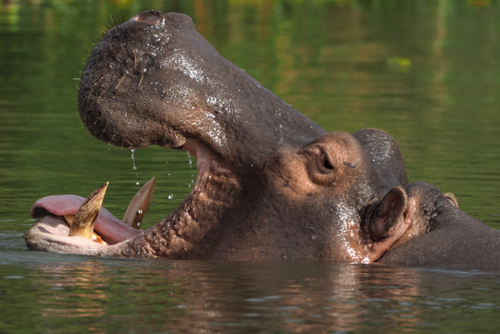
Day 11, October 1: Lake Naivasha to Amboseli.
To get to Amboseli we had to take the highway back to Nairobi. About an hour into our journey we were forced to make a detour, as the road was blocked by a broken down truck. We were onto yet another dirt track.
Another massage.
The dust was so bad in some spots that David had to use his windscreen wipers to remove it.
Once we returned to the main road we had a brief stop at a the Big Five Lookout to get the obligatory shot of the Great Rift Valley. Then we were on the relatively smooth, divided tarmac road into Nairobi.
The Great Rift Valley was once believed to run from Lebanon to Madagascar. It is now confined to Tanzania in the south and extending to Ethiopia in the north.
Once we were through the city we headed south on the Mombasa Road.
This is meant to be a motorway but there are still pedestrians, speed humps and hawkers.
It has a 120kph speed limit with commercial vehicles restricted to 80kph. We got nowhere near either of those speeds.
The road soon changed to a single lane and we slowed down to a sloth’s pace.
The GPS calculated that the trip from Naivasha to Amboseli would take around four hours. David’s estimate was for at least another two hours more.
We had lunch at Emali and then turned off the A108 towards Amboseli. There was still 113 kilometres to go.
I wondered how long it would take.
The landscape was now semi-arid and cement factories seemed to be the only feature on the landscape.
There is a new railway line running from Nairobi to Mombasa.
This, like a lot of other infrastructure in Kenya, was built by the Chinese. I am sure the cement factories are also part of China’s expansion plans in Africa.
With about fifty kilometres to go we had our first, very hazy, view of Mount Kilimanjaro. The snow flecked peak was just visible through a gap in the clouds.
Views of Africa’s highest mountain was one of the main reasons for visiting Amboseli.
We were hoping the clouds would soon shift.
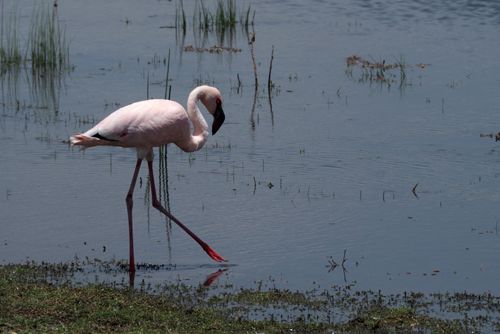
Day 12, October 2: Amboseli National Park.
In Amboseli we stayed at the Kimbo Safari Camp. It is regarded as a luxury tented camp. It’s tented only on the fact that the rooms are under canvas.
But the canvas is under a roof.
Dinner was the usual buffet in a large dining room.
To our surprise it was full.
This is the first time we had seen a crowd anywhere in Kenya. David explained that being a weekend many locals had come from either Nairobi or Mombasa for a break.
Amboseli National Park is in the shadow of Mount Kilimanjaro.
Many in Kenya regard the mountain, the tallest in Africa, as the sixth main sight to see – even though it’s in Tanzania.
So now we have seen the ‘Big Six’.
Apart from Kilimanjaro, the other attraction of the park is the large swamp area. This is like a magnet to the elephants, hippos and birds of all varieties.
Discounting the swamp, Amboseli National Park is very dry and dusty. Willy-Willys swirl randomly across the dry earth. Some of them spiral hundreds of metres into the air.
The park is more natural, in that there only a few roads to drive on, unlike Maasai Mara. The drawback is that you can’t get close to the action, when you need to.
The flamingos were hundreds of metres away.
Amboseli is for the animals while Maasai Mara is for the tourists.
We were witness to three kills on the game drive that were far less gruesome than we had seen previously.
A Saddle Billed Stork and a Purple Heron catching fish and a Yellow Beaked Egret scoring a frog.
We saw death and also creation as we watched two Ostriches mating.
I felt a little like a perve.
We had lunch at Observation Hill View Point.
It obviously had great views of the park and there should have been good views of Kilimanjaro, except it was still hidden by cloud.
Overall Amboseli seems to be a lot more peaceful reserve. If the lack of carcasses are anything to go by.
In the afternoon the Wili-Wilis all but disappeared and a dust storm took over.
Visibility reduced dramatically.
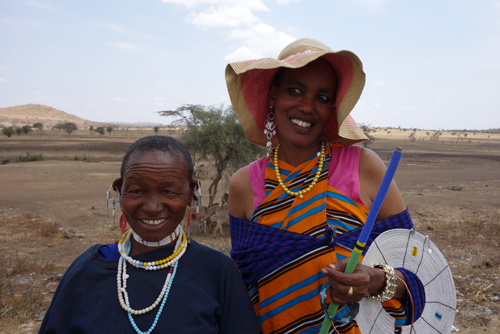
Day 13, October 3: Amboseli National Park to Mto wa Mbu and Lake Manyara National Park, Tanzania.
We were up very early to drive to the Tanzanian border.
This was our last morning in Kenya and as a farewell gift we got a good view of the ‘Big Rock’ (Kilimanjaro) and a sighting of two cheetahs.
As we left the Amboseli National Park the clouds rolled over Mount Kilimanjaro. It was like the curtain coming down on the final act of an MTC play.
We crossed over the border into Tanzania at Namanga.
It was very smooth, except we were stopped three times by police within our first fifteen kilometres after leaving passport control.
As we passed through small towns and then arrived in Arusha, my first impression was that Tanzania was more developed than Kenya.
This was confirmed when we found Msumbi Coffee, at our pick up point in Arusha.
We immediately ordered two espressos.
Other signs were better roads and public toilets. Even the villages were set back from the road and life seemed calmer and more ordered.
We passed the Tanzania Military Academy. This prestigious institution trains officers from across the region.
There was yet another change of plans. Our new driver/guide, Chris, told us we weren’t staying in Arusha but going to Mto Wa Mbu. There we were staying in the Fanaka Campsite and Lodges for two nights and travelling to Ngorongoro Crater from there.
Hakuna matata.
Our new vehicle was a heavily modified Toyota LandCruiser. It seated six on a raised platform at the back that also had a pop-up roof for game viewing.
These seemed to be the preferred tourist transport in Tanzania.
It was an ageing vehicle that could barely reach the 80kph speed limit.
Tuc Tucs were everywhere, replacing the Saccos we found in Kenya.
On the road to Mto Wa Mbu we stopped at Mbuyuni for a very colourful Maasai Monday market.
Everything was on sale from fruit, vegetables and meat to beds and sandals made from car tyres.
Memories of my hippy days in the 1960s’.
There were giant Boab trees along the way, a reminder that Africa and Australia were once joined.
There they are called a Boabad in this part of Africa.
There are more that 120 tribes in Tanzania, with English the official language. The common language is Swahili, however there are over 100 different other languages spoken.
Before independence in 1961 it was known as Tanganyika. In 1963 Zanzibar and Tanganyika merged and the country became known as Tanzania, a combination of the two names.
As we moved south the temperature warmed up and the humidity got higher. Then we arrived at Lake Manyara National Park, which is just near Mto Wa Mbu, Chris’s home town.
The lake is huge and surrounded by jungle, which explained the humidity.
As we wended our way around the park, there were plenty of baboons and birds hiding in the heavy undergrowth.
Once we reached the lake the undergrowth vanished and there was a flat open marshland filled with pelicans, Egyptian Geese, Marabou Stork, wildebeest and zebra.
The pelicans dominated the scene.
There were thousands.
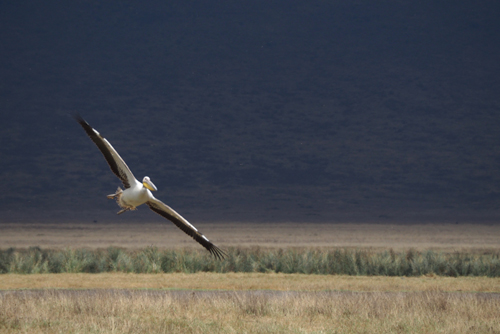
Day 14, October 4: Ngorongoro Crater.
Ngorongoro Crater is regarded as the ‘Cradle of humanity’
For us it was a void of whiteness, as the rim of the crater was shrouded in mist. When we descended the 600 metres to crater floor we were below the cloud.
Only then did we fully realise it’s grandeur.
Ngorongoro Crater measures between 16 and 19 kilometres across and has an area of 264 square kilomteres.
It is in part fed by water from Lake Victoria and is the world’s largest inactive, intact and unfilled volcanic caldera. It was formed between two to three million years ago.
It’s a very diverse eco system that has supported life for millions of years. It changes from arid grasslands and swamps to a verdant green, undulated Acacia forrest.
The animals that are in the crater, stay there and don’t migrate, except for some zebra and wildebeest.
Being a natural enclosure the lion population suffers from inbreeding. Any male lion that migrates there gets a very hard time from the indigenous lions of the crater.
We came across two lionesses asleep on the road. They had obviously had a big lunch and were sleeping it off.
It seems that siestas are also popular in Africa.
On leaving the Ngorongoro Crater Conservation Area we had a baboon experience.
There were a number of them hanging about at the gate. Thea had her side window open and in a flash one was through and snaffling leftovers from the lunch box on the back seat.
The baboon left as quickly as she came.
Not far from the Ngorongoro Crater is Laetoli. Here footprints were discovered by archaeologist Mary Leakey in 1978. These showed evidence that bipedalism (walking upright on two legs) preceded enlarged brains in hominids.
From this area modern man developed and populated the world.
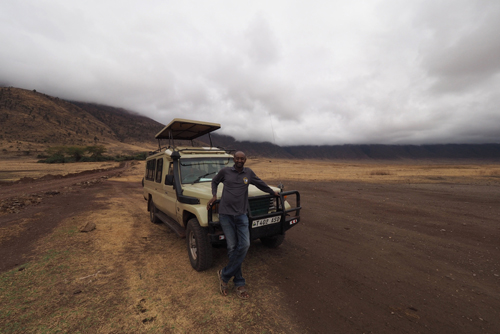
Day 15, October 5: Mto wa Mbu to Zanzibar.
Our final day was spent travelling. We drove from our hotel in Mto wa Mbu to the airport, on the outskirts of Arusha, to catch a 3:30 pm Precision Air flight to Zanzibar.
On the drive back we saw Massai boys dressed in black. We had seen many similar groups on the drive down.
These youths are partaking in their initiation into manhood. They paint their faces white, with a rather spooky mask and wander the roads on the tourist routes. (They also do more serious things like kill a lion).
If you want to take a snap you have to pay them. If you try and take one from your car, they will throw stones at it.
I kept my camera in its bag.
It had been an amazing 15 days, made even more interesting by the continually shady dealings of our tour operator.
In the end we saw what we came to see and got a wonderful insight into Africa and it’s vagaries.
There was even a Msumbi coffee shop at the Arusha Airport.
Hakuna matata.
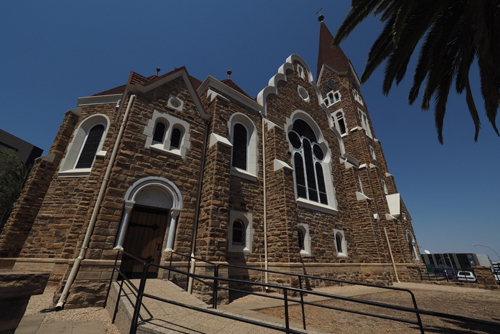

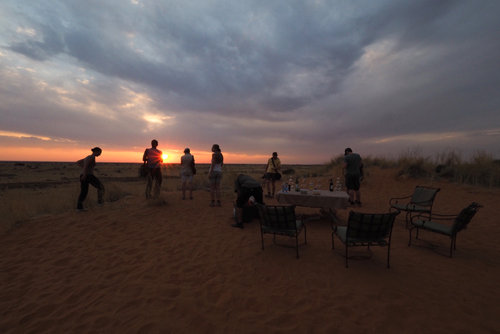
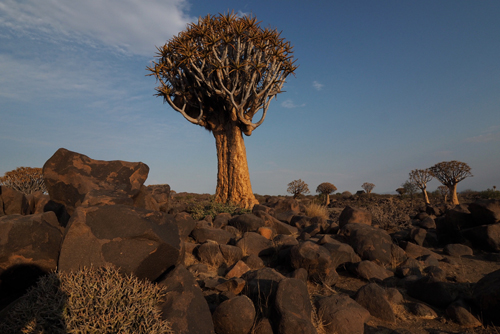

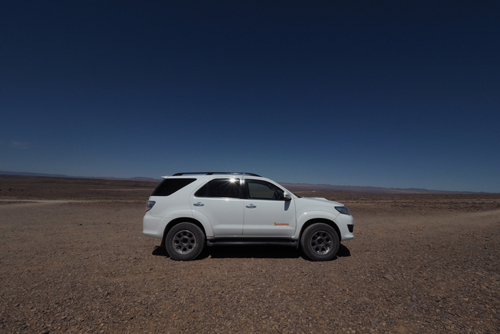
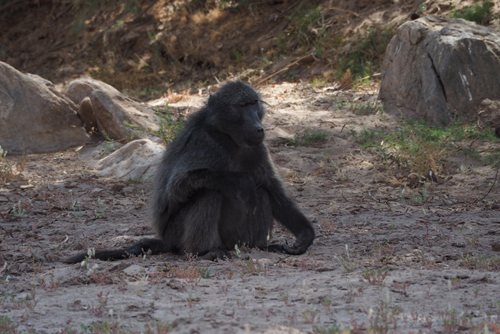
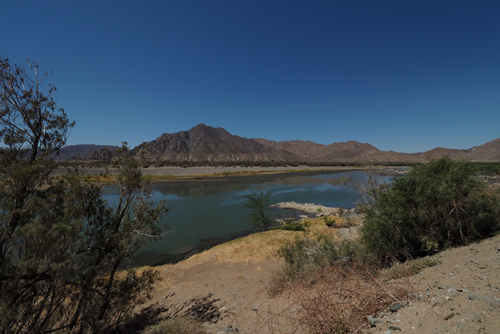
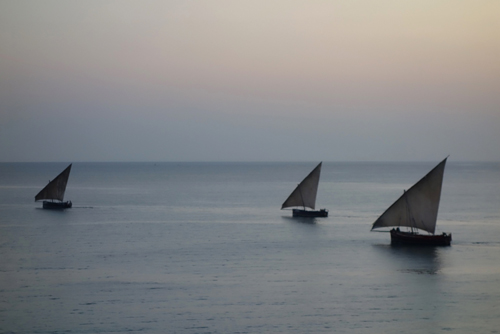
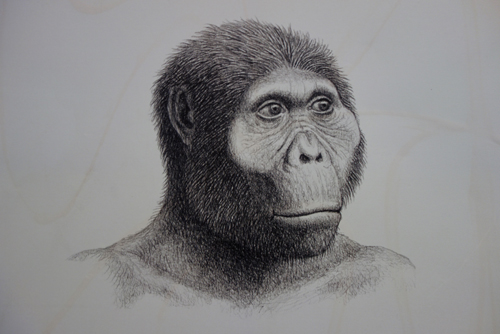















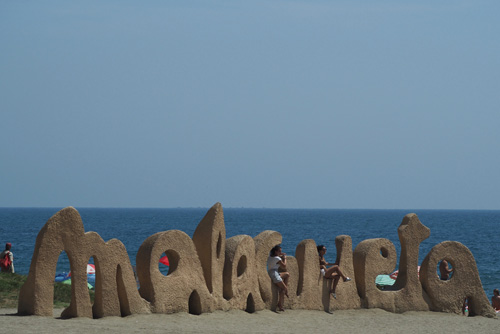
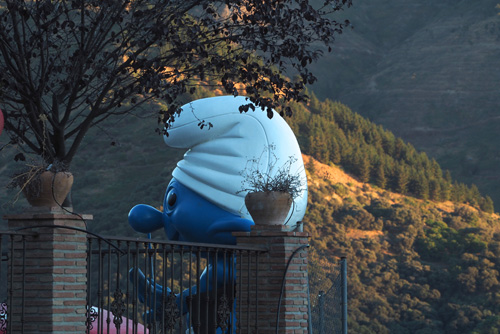
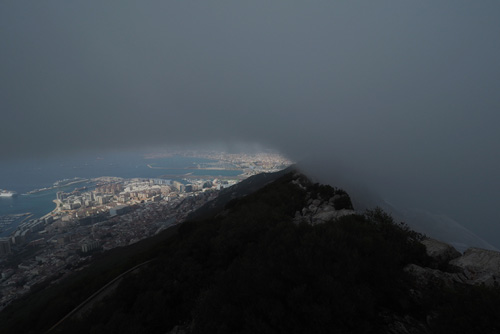
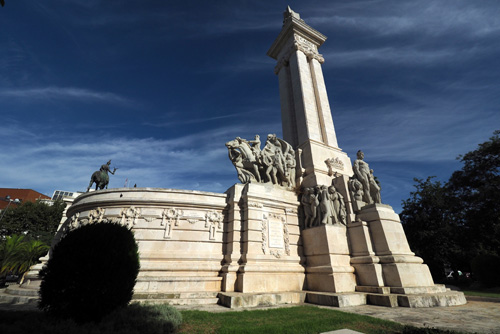
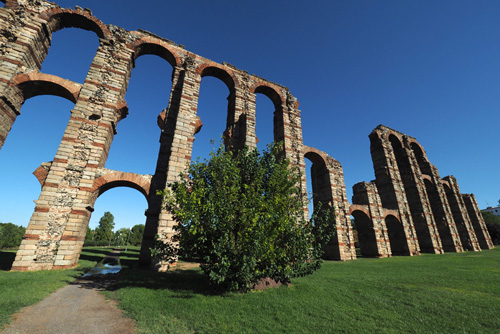
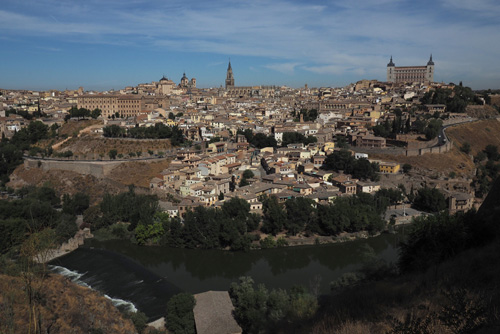

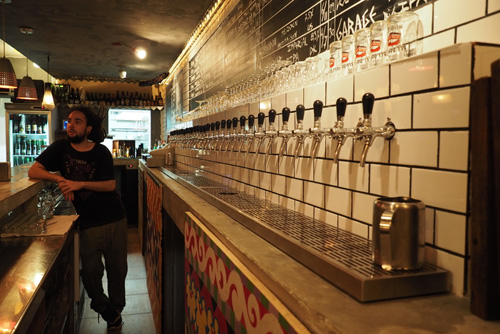

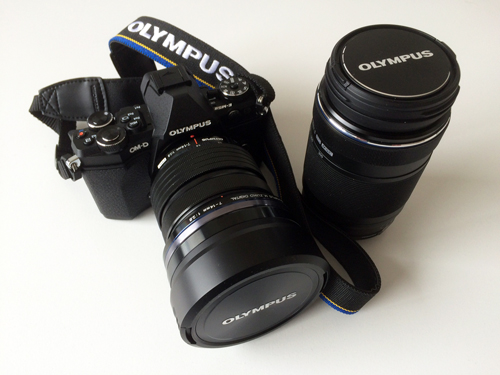
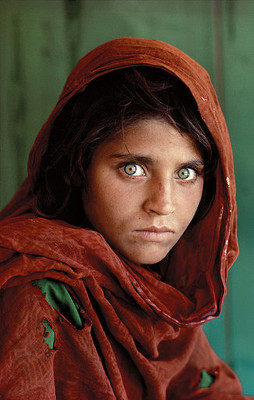
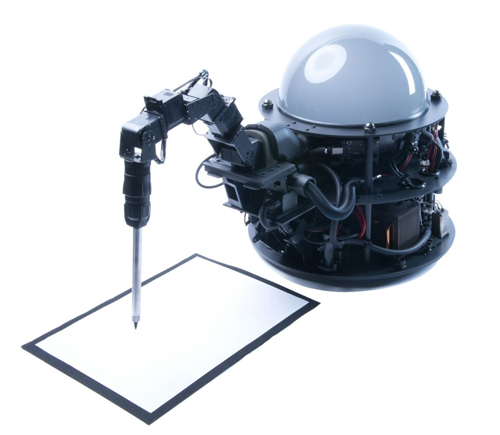










Know your market.
July 23rd, 2016We have recently travelled by road to Brisbane and back.
Travelling north was via the coast and the return journey was on the inland route, passing through Goondiwindi, Lighting Ridge, Bourke and Griffith.
For many evenings meals we availed ourselves of the various clubs, especially in NSW. These are reasonably priced, centrally located and offer some surprisingly good food.
In Swan Hill, Victoria, we had a meal at the RSL, which was next door to our motel. It was a Sunday night and the only patrons were people of our vintage and many who were a lot older.
The bar and waiting staff were at least two generations younger and this was reflected in the music that was being played.
While the older generation were enjoying their Grilled Barramundi, Reef n’ Beef and Parmi, they were subjected to a medley of Chicago House, Rap and Detroit Techno.
Fortunately most of them could block out the music by turning down the volume on their hearing aids.
Posted in Comment | No Comments »